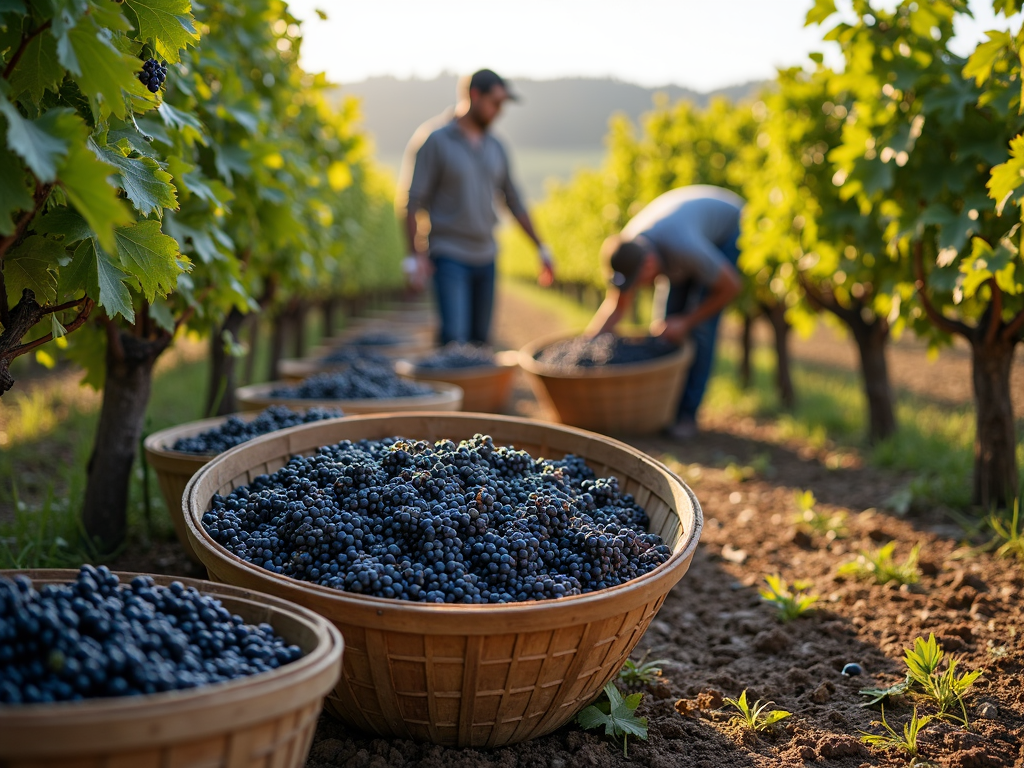Understanding The Unique Terroir of Willamette Valley
Willamette Valley, nestled in Oregon, USA, is famous for its outstanding Pinot Noir wines. This article dives into Understanding The Unique Terroir of Willamette Valley, exploring the soil, climate, and landscape that make it special. We’ll also spotlight Jackson Family Wines and their vineyards here.
Welcome to Willamette Valley
Picture a lush valley tucked between mountains, where rolling hills are covered in vineyards. That’s Willamette Valley, a top wine region in Oregon. Since the 1960s, when pioneers planted the first Pinot Noir vines, it’s grown into a place that rivals France’s Burgundy. I’ve walked these vineyards myself, and the passion here is contagious.
What Makes Terroir Special?
Terroir is all about how nature shapes wine. It’s the mix of soil, weather, land, and even the people who care for the vines. In Willamette Valley, these pieces fit together perfectly, creating wines with flavors you won’t find anywhere else.

The Soil Beneath the Vines
The soil in Willamette Valley is a big part of its magic. The star is Jory soil—a reddish, iron-rich volcanic soil that drains water well. It pushes grape roots deep, giving wines a mineral taste and strong structure. There’s also sedimentary and silty soil, adding variety to what grows here.
I’ve seen Jory soil up close—it’s striking with its rusty color. That iron comes from ancient lava flows, and it’s why Pinot Noir from this region has such a unique kick.

A Climate Made for Grapes
The weather in Willamette Valley is cool, much like Burgundy. Winters are wet, summers are warm and dry, and the Pacific Ocean keeps things steady. This gives grapes a long time to ripen—perfect for building rich flavors. Daytime heat and cool nights keep the grapes balanced, with bright acidity and fruity notes.
Hills, Valleys, and Microclimates
The land here isn’t flat—it’s full of hills and slopes. The Coast Range blocks harsh winds from the west, and the Cascade Range guards the east. This setup creates little pockets of climate, called microclimates. Each spot can grow grapes a bit differently, letting winemakers play with variety.

People Power: Winemaking and Care
Winemakers in Willamette Valley don’t just grow grapes—they protect the land. Many, like those at Jackson Family Wines, use sustainable tricks: planting cover crops, skipping harsh chemicals, and letting nature do its thing. This keeps the terroir pure, so the wine tastes like the place it came from.
I’ve talked to these folks. One winemaker told me, 'We’re here to let the land speak.' That stuck with me.
Jackson Family Wines in the Valley
Speaking of big names, Jackson Family Wines has a strong foothold here. Their vineyards, like Gran Moraine in Yamhill-Carlton and Penner-Ash in Dundee Hills, show off the best of Willamette Valley. Jackson Family Wines vineyards locations are picked for their special soils and climates, making top-notch Pinot Noir that screams terroir.
They’ve been at it since the 1980s, focusing on small batches and hand-picking grapes. It’s all about quality over quantity.

Wine Brands That Shine
Willamette Valley is packed with great wine brands. Besides Jackson Family Wines, you’ve got Domaine Serene, Archery Summit, and Sokol Blosser. These names put the region on the map. Take Domaine Serene’s Evenstad Reserve—it’s got red fruit, earthy vibes, and a smooth finish, all thanks to the valley’s terroir.
My Take: Walking the Vineyards
I’ve been lucky to visit Willamette Valley a few times. One trip, I walked a vineyard with a winemaker who showed me how soil changes from one row to the next. We tasted grapes right off the vine—sweet, tart, and full of life. It hit me how much this place shapes what’s in your glass.

More Than Just Pinot Noir
Pinot Noir gets the spotlight, but don’t sleep on the rest. Chardonnay here is crisp and mineral-driven, while Pinot Gris brings light, fruity vibes. Each grape type pulls something different from the terroir, proving this valley’s got range.
How It All Comes Together
Here’s a quick look at what makes Willamette Valley tick:
- Soil: Volcanic Jory, plus sedimentary and silt—diverse and deep.
- Climate: Cool, long seasons with ocean influence.
- Land: Hills and microclimates galore.
- People: Winemakers who keep it real and green.
Add it up, and you’ve got a recipe for amazing wine.

Pairing Ideas
Want to try these wines? Pair Pinot Noir with salmon or mushroom risotto—the earthy notes match perfectly. Chardonnay goes great with roast chicken, and Pinot Gris is a winner with fresh salads. It’s an easy way to taste the terroir at home.
Facing the Future
Climate change is a challenge, but Willamette Valley winemakers are adapting. They’re planting on higher slopes and tweaking harvest times. It’s all about keeping that terroir alive for years to come.
Wrapping It Up
Understanding The Unique Terroir of Willamette Valley means seeing how soil, climate, and care create something special. From the volcanic Jory soil to the cool breezes and dedicated hands at places like Jackson Family Wines, this region delivers wines with soul. I say grab a bottle, visit if you can, and taste the story for yourself.